Hydrogen Peroxide Well Water System
- Eliminate odors with hydrogen peroxide!
- Hydrogen Peroxide adds oxygen to kill odors.
- No chlorine or chemical residues.
Now you can eliminate sulfur and rotten-egg odors and enjoy clean fresh smelling water throughout your home.
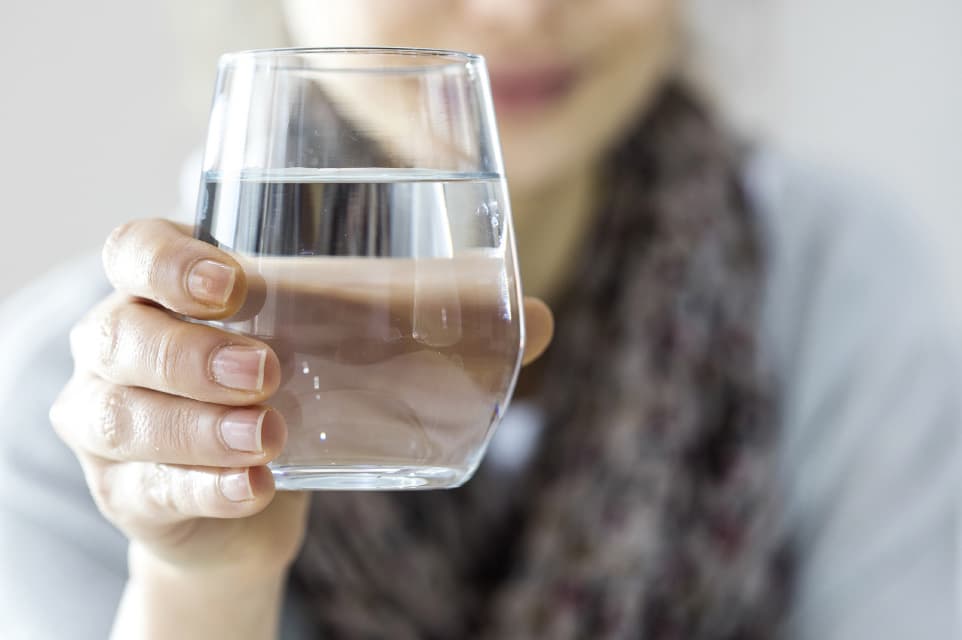

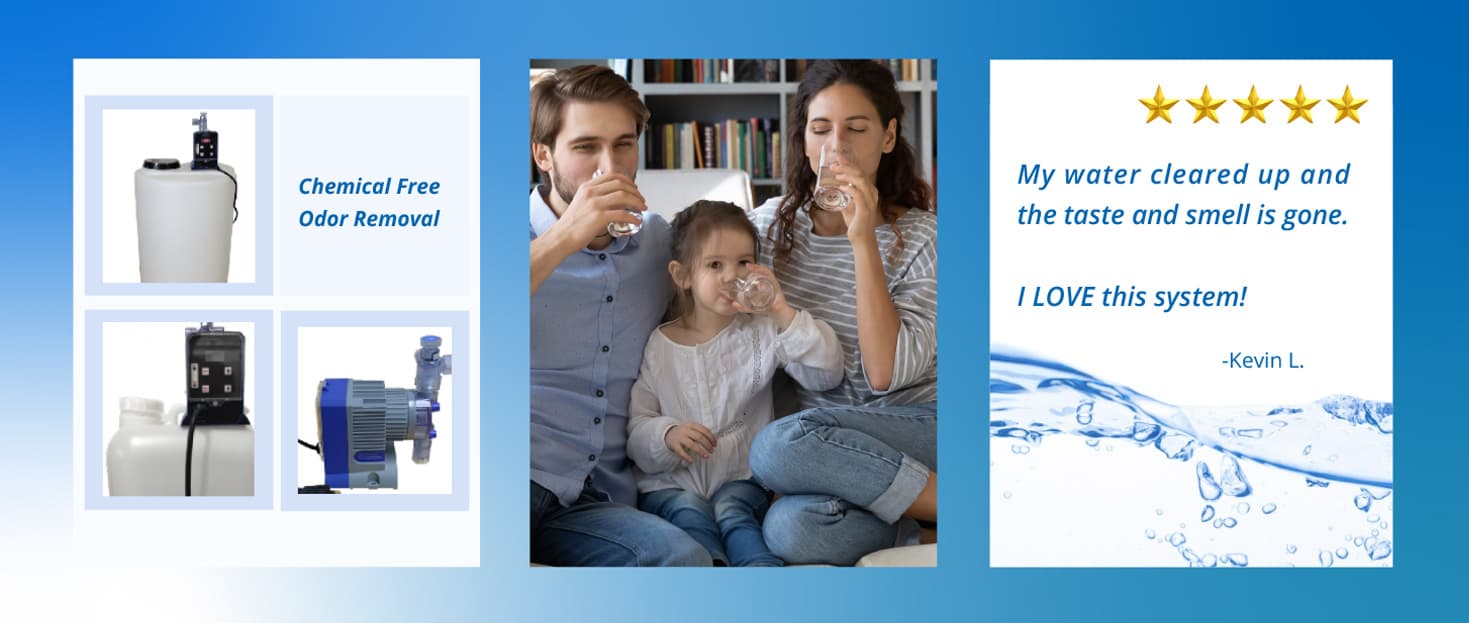
Hydrogen Peroxide Water Treatment System
- If you’ve noticed an unpleasant odor from your well water, you might think chlorine is the solution. But before you go down this route, take a moment to consider hydrogen peroxide as an alternative.
- Water containing hydrogen sulfide gas ("H2S") has a unique "rotten egg" odor, which is often present in both hot and cold but may become more pronounced from the hot water. This kind of water can discolor coffee, tea, and other beverages and alter the appearance and taste of cooked food.
- Hydrogen peroxide is an environmentally friendly and cost-effective way to eliminate this odor in your well water.
Let’s explore the four main reasons hydrogen peroxide is better than chlorine and how it works.
- Hydrogen peroxide systems are often better than chlorine at eliminating rotten-egg odor in well water, as it works faster than chlorine.
- When injected into water, hydrogen peroxide releases a large amount of dissolved oxygen which has a strong oxidizing effect, destroying odors and oxidizing iron and other contaminants.
- Hydrogen peroxide does not add chemical by-products into your drinking water, only oxygen, and water.
- Water treated with peroxide can be filtered with activated catalytic carbon, which lasts much longer than carbon used for removing chlorine.
By releasing oxygen atoms into the environment, hydrogen peroxide reacts to the hydrogen sulfide gas molecules, breaking them up into water and small amounts of sulfur dioxide.
Remember that hydrogen peroxide is a much safer method for eliminating hydrogen sulfide gas (which causes rotten-egg odors) than some chlorine bleach since it does not contain harmful chemicals that could damage your family's health or the environment.
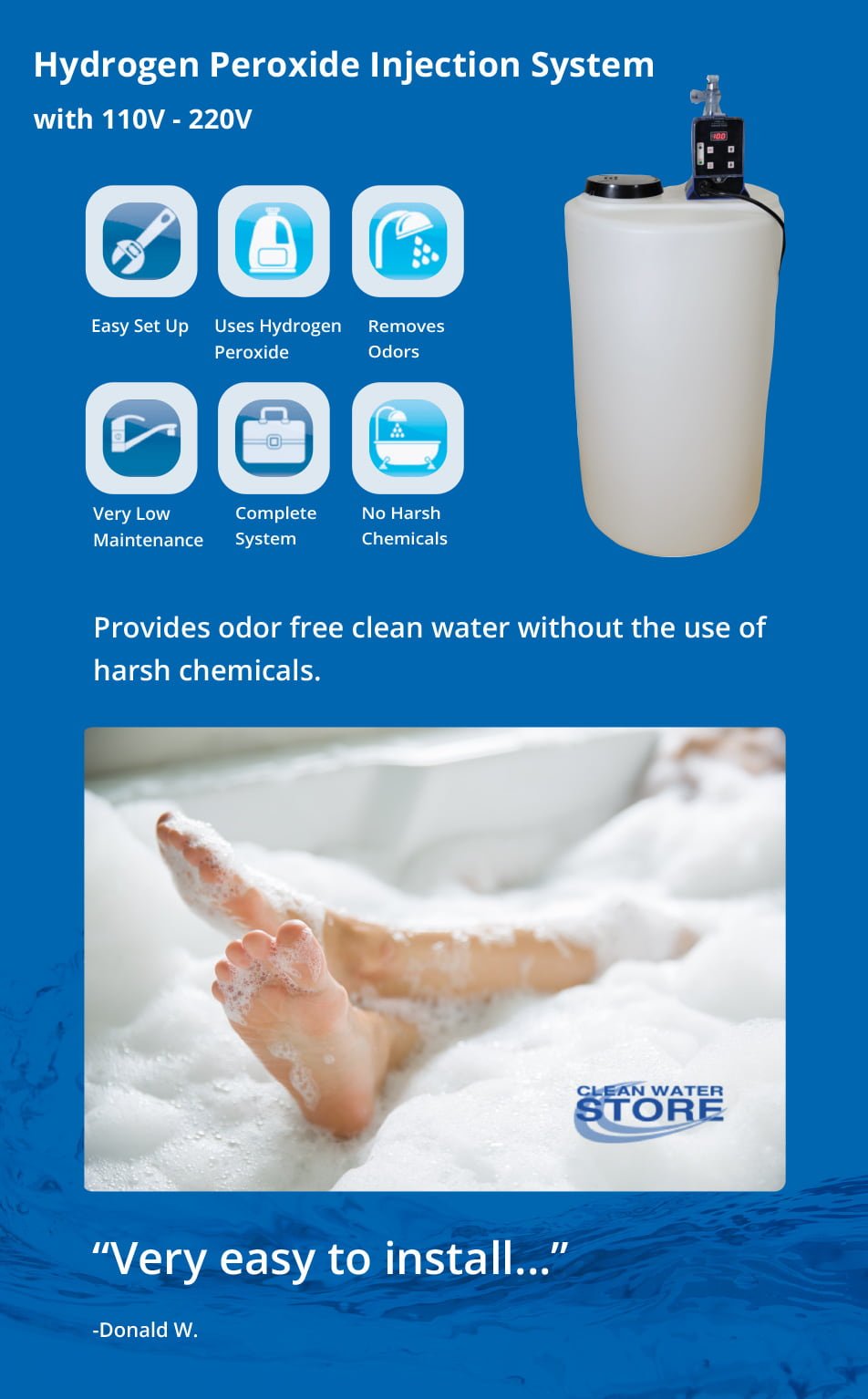
What Is Hydrogen Peroxide Water Treatment?
Hydrogen peroxide (H2O2) is a naturally occurring chemical compound composed of two hydrogen atoms and two oxygen atoms that can be found in rainwater and some natural springs. It can also be produced synthetically and used for several purposes, including disinfecting surfaces and eliminating odors in well water.
Hydrogen peroxide water treatment injects peroxide in precise levels into the water pipes as the water flows from your well. Hydrogen peroxide systems can be installed at the wellhead or, if a proportional flow-sensor type peroxide system is used, on the incoming water pipes to your home.
After the peroxide is injected, the water flows through a catalytic carbon backwash filter system to remove all hydrogen sulfide gas and any remaining peroxide residual along with sediment and oxidized particles.
Note that peroxide is not considered a suitable treatment for drinking water disinfection. If your water contains coliform bacteria, we recommend an ultraviolet sterilizer and a nano-ceramic bacteria filter as the final stage.
How Can I Turn On and Off My Hydrogen Peroxide Injection System Automatically?
The injection pump needs to be installed so it turns on and off automatically each time the well pump turns on, or water is flowing.
Options to install are:
1. Wire to your well pump pressure switch: Wire the peroxide pump to the same circuit as the well pump via the pressure switch.
2. Use an optional pre-wired flow switch. The flow switch is plugged into a wall outlet. The peroxide injection pump is plugged into an outlet on the flow switch. When the water flows, the peroxide pump is turned on and off when water stops flowing.
3. Use a proportional feed-type pump. This type of peroxide pump works in conjunction with a flow meter. It is wired, so the peroxide pump injects more or less peroxide based on the water flow. This is also an easy way to install your peroxide system without requiring an electrician.
Properly maintained and managed allows precise control over the amount and concentration of hydrogen peroxide in the well water, ensuring maximum effectiveness against odor-causing sulfur bacteria and other microorganisms.
In addition to being economical and easy to use, one key advantage of these systems is their ability to reduce problems associated with chlorine-based treatments, such as corrosion, taste and smell issues, and potential health risks.
Best of all, no retention tank is typically needed when using hydrogen peroxide for odor removal.
The peroxide pump can be controlled automatically by wiring it to a pressure switch. It will then turn on and off with the pressure switch. You can also use a pre-wired flow switch so that when there is flow of water the peroxide pump is activated.When using either the flow switch or direct wiring to the pressure switch, install the injection check valve before the pressure tank for consistent dosing. If you want to install an injection check valve after the tank, use the proportional peroxide injection with a flow sensor so the peroxide dose is controlled by the flow of water.
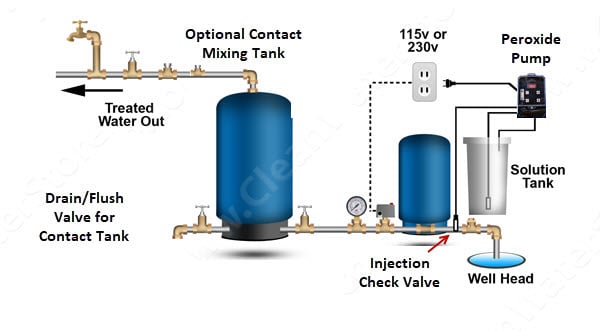
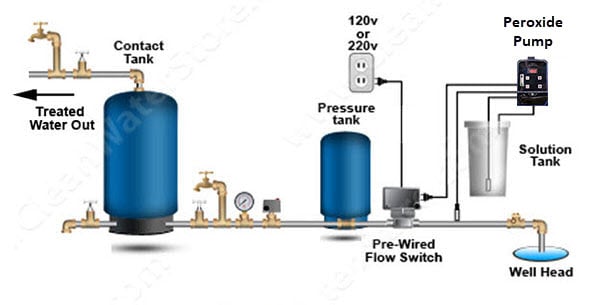
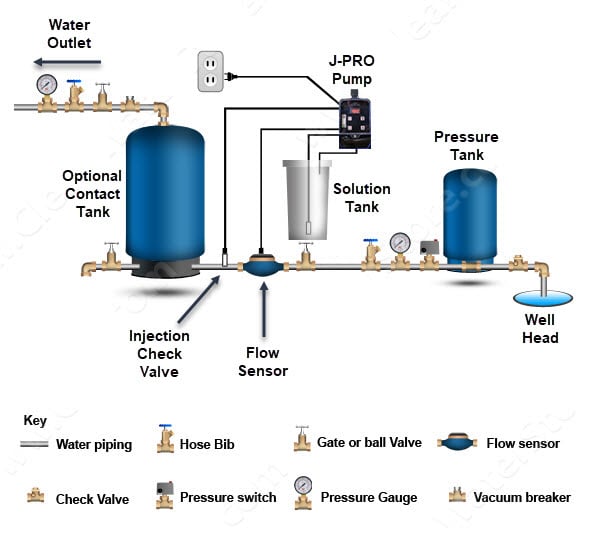
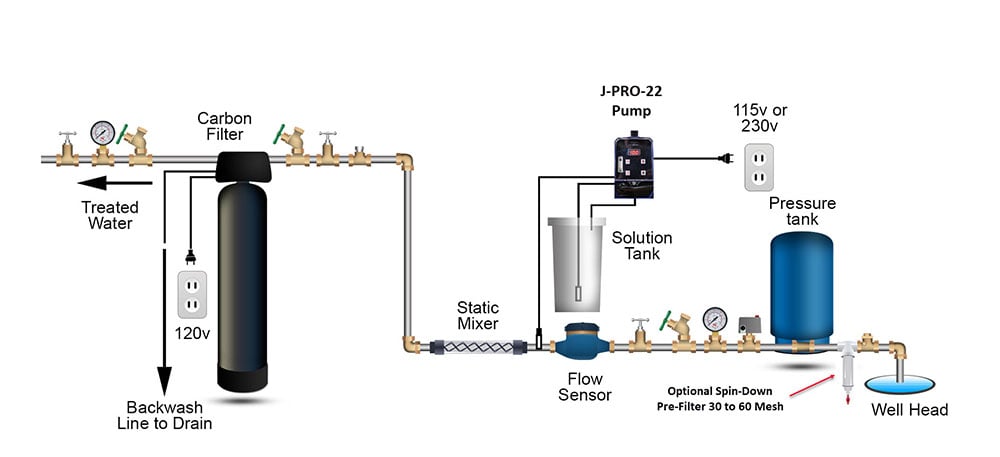
Why is Catalytic Activated Carbon Often Used After Hydrogen Peroxide Injection System?
Catalytic Carbon Backwash Filters are ideal for use with hydrogen peroxide treatment systems.
Catalytic carbon media is processed to enhance carbon’s natural ability to change contaminants chemically. A catalytic reaction occurs on the carbon's surface and increases the peroxide's ability to oxidize contaminants.
When hydrogen peroxide comes into contact with catalytic carbon media, the carbon acts as a catalyst to accelerate the decomposition of the hydrogen peroxide into water and oxygen gas.
This is because activated carbon has a large surface area, allowing it to come into contact with more hydrogen peroxide molecules. Additionally, our activated catalytic carbon pores are the perfect size for decomposing hydrogen peroxide molecules.
Granular Catalytic Activated Coconut Shell Carbon is manufactured from high grades of coconut shells. It was designed to reduce Chloramines, Hydrogen Sulfides, Hydrogen Peroxides, THMs, TCE, PCE, detergents, pesticides, Phenols, taste, and odor and it works great with peroxide.
Is Water Treated with Hydrogen Peroxide Safe To Drink?
Yes. Drinking Water treated with hydrogen peroxide is generally considered safe to drink. The process is known as the Advanced Oxidation Process (AOP). A small precise dose of peroxide is automatically injected into the water which then breaks down into oxygen and water. Hydrogen peroxide decomposes rapidly unlike chlorine gas or bleach.
The final optional stage of catalytic carbon removes any remaining peroxide residual if present.
What Else Do I Need to Know About this Hydrogen Peroxide Injection System?
- Works over a wide range of water flow rates for most home water wells.
- Choose the standard system and wire to the pressure switch or use the pre-wired flow switch.
- If installing after the pressure tank or on the inlet to your home, use the Proportional Flow system for installing anywhere after the pressure tank or if you have a variable speed constant pressure system.
- Good for well water flow rates from 0.5 to 50 Gallons Per Minute (1 - 50 GPM)
- Pumps 2.2 to 22 gallons of solution per day
- Works for line pressures up to 110 PSI
- Dual Voltage 110 to 230 volts 50/60hz
- Dimensions: 5-gallon model: 10" wide x 15", height including pump is 26".
- Dimensions: 15-gallon model: 14.5" wide x 24", height including pump is 35".
- Dimensions: 35-gallon model: 18" wide x 33", height including pump is 44".
- Digital speed adjustment makes adjusting the pump fast and easy for accurate injection.
- Unlike Stenner-style peristaltic pumps: no pump tube failures, no rollers to go bad needs less service, and is good for continuous duty.
- SEE CARBON BACKWASH FILTERS
What is included?
- J-PRO-22 Peroxide Injection Pump
- 5, 15 or 35-gallon heavy-duty polyethylene solution tank
- Tubing and fittings to connect the pump to the injection check valve and solution tank
- 1 Injection Check valve 1/2" male pipe thread
- Suction tubing and foot valve to connect solution tank to pump
- Degassing / Priming valve to make it easy to prime the pump
- Easy to read Manual
What size solution tank should I order?
- We recommend the 5 or 15-gallon tank. The 5-gallon is convenient due to its size and ease of handling.
- There is usually no home well water application where the 35-gallon tank is needed.
- Most of our customers use 1 to 2 gallons of peroxide solution per month.
- Mix up enough fresh peroxide solution to last for 3 months as peroxide can lose its strength over time.
- Dimensions: 5 gallon model: 10" x 10" x 15", height including pump is 26"
- Dimensions: 15-gallon model: 14.5" wide x 24", height including pump is 35".
- Dimensions: 35-gallon model: 18" wide x 33", height including pump is 44".
What type of peroxide should I use?
- We recommend using Certified Hydrogen Peroxide at 7%
- For most applications, the 7% is further diluted (easy instructions in the guide)
- Our 7% peroxide stores for up to 8 to 12 months in a cool dark dry location.
How much peroxide will I use each month?
- Most of our customers use about one to two gallons of 7% peroxide per month
- You might use less or more depending on the amount of water you use and how much peroxide is injected
- The peroxide system is easily adjustable (instructions and support included)
- For example, if you had it set to inject 10 parts per million of peroxide, one gallon would treat 7,000 gallons of water.








